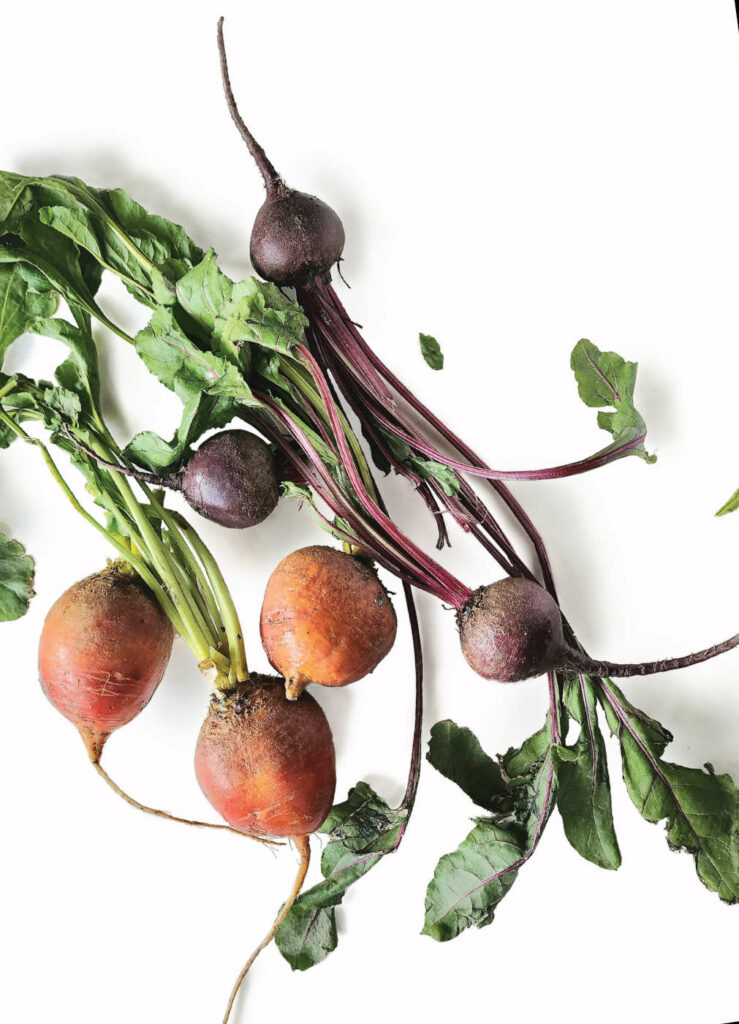
Remember childhood dinners when beets were the lonely, uneaten vegetable left on your plate? Compared to other root vegetables such as potatoes, sweet potatoes, or carrots, beets haven’t always been prized table fare. But with so much to offer, it might be the perfect time to give beets a second chance. From earthy sweetness to an impressive nutritional profile, beets are a culinary powerhouse, especially in the fall, when they are in peak season. Beets can be eaten raw, cooked, pickled, or juiced, and both the root and the leafy greens are edible.
AN EARTHLY SECRET
Many claim that an earthy flavor often associated with beets is a little too strong for their liking, and scientific evidence backs that up. Geosmin is a chemical compound naturally found in beet roots: different cultivars have varying concentrations. Remarkably, geosmin is also produced by bacteria and fungi in soil, contributing to the familiar smell known as “petrichor”—the earthy smell of rain. That familiar scent of geosmin is also released when soil is disturbed by digging or planting.
ENHANCING FLAVOR
Geosmin’s intensity can easily be reduced through roasting or boiling, pairing with acids like vinegar or citrus, incorporating fresh garden herbs, adding tangy cheeses, or serving beets with other strong flavors like onions, garlic, and ginger. Harvesting beetroots while they are younger and removing the skin before eating can also help reduce that dirt-like flavor, especially when eating beets raw. And certain newer beet cultivars are specifically bred to have lower levels of geosmin (several are included in the cultivar list below).
A DEEP HISTORY
Remarkably, while they might individually look quite different, domesticated beets— including sugar, table, and leafy beets (aka Swiss chard)—are each scientifically known as Beta vulgaris ssp. vulgaris. Beets have been grown (in some form) for thousands of years, with each unique version selected for its improved benefits over its wild perennial precursor, “sea beets” (Beta vulgaris ssp. maritima). Originally, sea beets grew along the coastal areas surrounding the Mediterranean, North, and Atlantic seas—around Europe and Northern Africa. Ancient civilizations primarily valued the leafy greens, which were eventually selected into what we now know as Swiss chard. Over hundreds of years, ancient Romans began selecting, growing, and harvesting seeds from those plants that exhibited larger, reddish-colored roots, utilizing them as a starchy vegetable. Throughout history, beets have been used as a natural dye, for their reported medicinal properties, and have even been considered an aphrodisiac in some cultures. The modern sugar beet, which now makes up about 20 percent of the world’s sugar crop, began its rise to culinary fame in the 19th century, when the larger, white-rooted versions were developed primarily for sugar production.
In America, beets have a storied history, first arriving with European settlers during the 1800s and quickly becoming a staple in early American gardens and kitchens for their ease of cultivation and versatility.
During the rations resulting from World War II, they were used as an inexpensive filler in tomato sauces. It was during this time that beets started popping up in “red velvet” cake recipes when eggs, milk, and chocolate were harder to come by. This might seem like a bizarre inclusion until you remember that another root veggie, the carrot, also has its own famed cake. In fact, some red velvet cake recipes still call for beet juice—perfect for those with an aversion to petroleum-based food dyes. The intense red color of the beet puree not only adds visual appeal, but also helps keep the cake from drying out.
With their rich history, easy cultivation, and diverse culinary applications, beets are a fall staple that brings color, flavor, and nutrition to your table, and today they are enjoying a renaissance. Whether you’re growing them in your North Texas garden or picking them up at the local farmers market, beets are sure to add a bit of excitement to your fall menu. They are truly unbeetable.
Recipes and planting tips below.
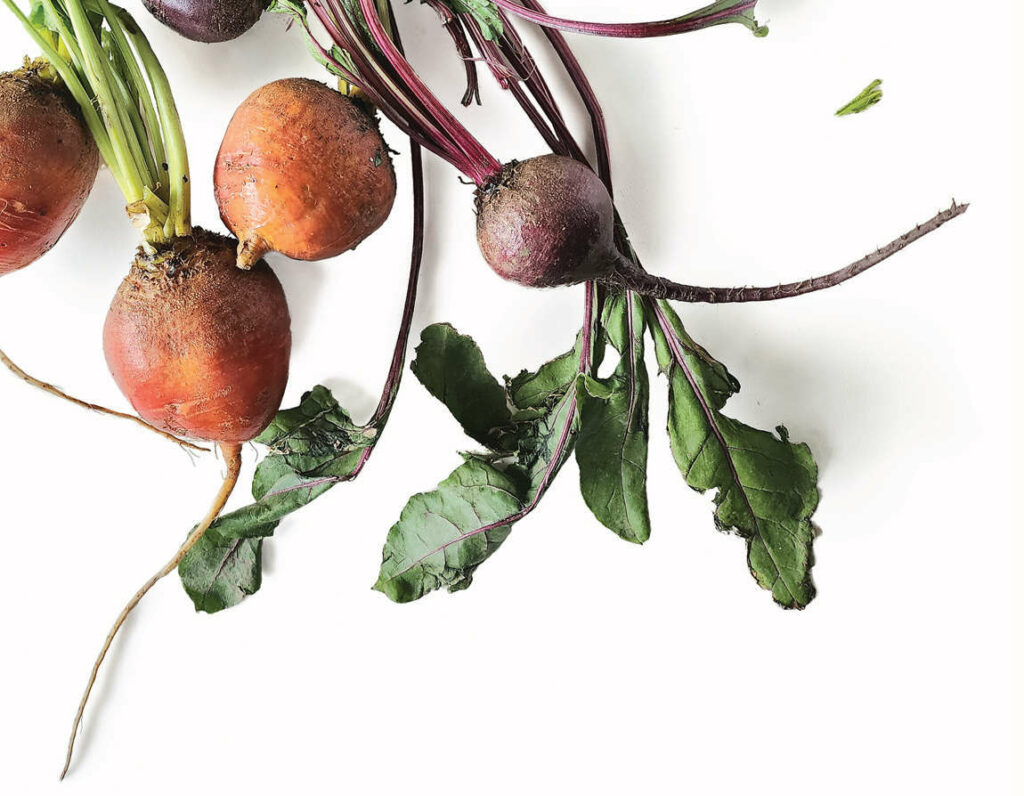
GROWING BEETS
TIPS FOR NORTH TEXAS GARDENERS
Beets are a cool-season crop, making them perfect for fall planting in North Texas. Beverly Thomas, owner and grower at Texas Tested Seeds and Plants in Weatherford, has been growing beets in Texas for over 22 years and encourages North Texas gardeners to try for themselves. “Beets are very easy to grow as long as their optimum growing conditions are met,” says Thomas. She warns that although beets don’t love the heavy clay soils that dominate North Texas, they are easily adaptable with a little soil preparation—and as long as you plant in the proper season. “Soil pH is paramount. A 6-6.8 pH is ideal,” Thomas advises.
While beets (like many other veggies) prefer slightly acidic soils, most North Texas soils naturally have higher pH alkaline soils ranging from a pH of 7.2 to 7.6. To improve soil health and help break up heavy clay soils, gardeners should consider incorporating organic matter like compost before planting most veggies, a move that enriches the soil structure and helps lower the pH. Some gardeners also fold in naturally acidic coconut coir or peat moss and use acidified fertilizers to help bring their soil pH down.
Beets can be planted in the spring (to be harvested before it gets too hot) and in the fall (for harvest before the first hard freeze). But Thomas recommends only planting when soil temperatures exceed 50°F for best germination.
“The second biggest challenge is [not] allowing weeds to overtake their growing area. Beets have a few pests, but most are minor,” says Thomas.
To reduce weed pressure (and the pests they can sometimes invite), consider maintaining a mulch layer after seed germination. Stay on top of removing weeds as they emerge.
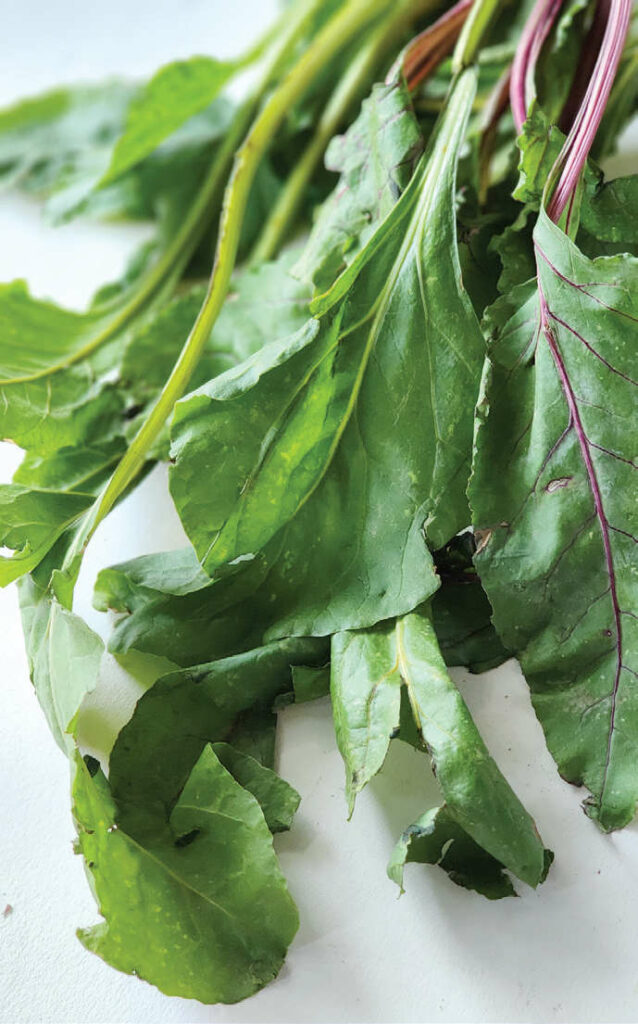
PLANTING
Sow beet seeds directly in thTe garden about 1 inch apart and ½ inch deep. As they emerge, thin seedlings about 3-4 inches apart to give them room to grow.
WATERING
Beets need consistent moisture to develop properly. Water regularly between rain events, ensuring the soil stays evenly damp but not waterlogged.
HARVESTING
Beets are usually ready to harvest 55-60 days after planting. Harvest when roots are 1-3 inches in diameter for the best flavor and texture. After harvesting, Thomas has a few tips to help beets stay at peak freshness.
“Always remove the tops before storage, and store in a plastic bag. Beet roots will last for months in the refrigerator as long as they are in a plastic bag,” says Thomas. “If not bagged, they will dissipate and wither almost immediately. But don’t toss the tops! Beet greens are edible and nutritious and, like their cousin Swiss chard, contain more iron than spinach and are packed with vitamins A and C.”
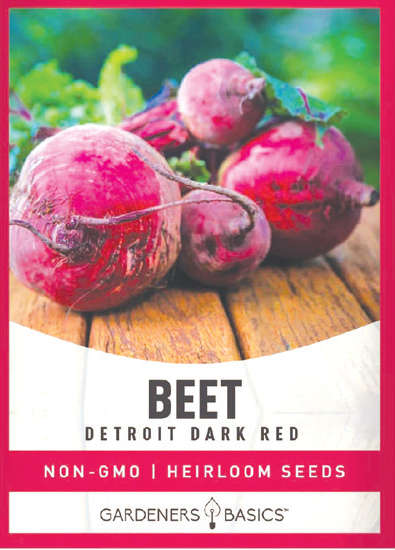
SEED SELECTION
Although folks can be successful growing many beet cultivars, Thomas recommends first trying the hybrid varieties below to set yourself up for success. *Denotes cultivars with less geosmin.
Badger Flame (Hybrid, 55-60 days to harvest): Known for its mild, sweet flavor and vibrant orange color, Badger Flame beets are excellent for eating raw and in salads because of their less earthy flavor.
Merlin (Hybrid, 55-60 days to harvest): Merlin beets are prized for their high sugar content and uniform, round shape, making them a favorite for both raw and cooked dishes.
Guardian (Hybrid, 55-60 days to harvest): This disease-resistant beet produces smooth, deep-red roots with a sweet flavor, ideal for roasting and pickling.
Touchstone Gold (Open-pollinated, 55 days to harvest): With its striking golden color and sweet, mild taste, Touchstone Gold is perfect for adding visual appeal and flavor to salads and dishes.
Detroit Dark Red (Heirloom, 55-60 days to harvest): A classic heirloom variety, Detroit Dark Red beets are known for their rich color, tender texture, and earthy sweetness, making them a staple in many gardens.
Bull’s Blood (Heirloom, 55 days to harvest): This heirloom variety is famous for its deep red leaves, which can be used as flavorful salad greens, and its sweet, earthy roots.
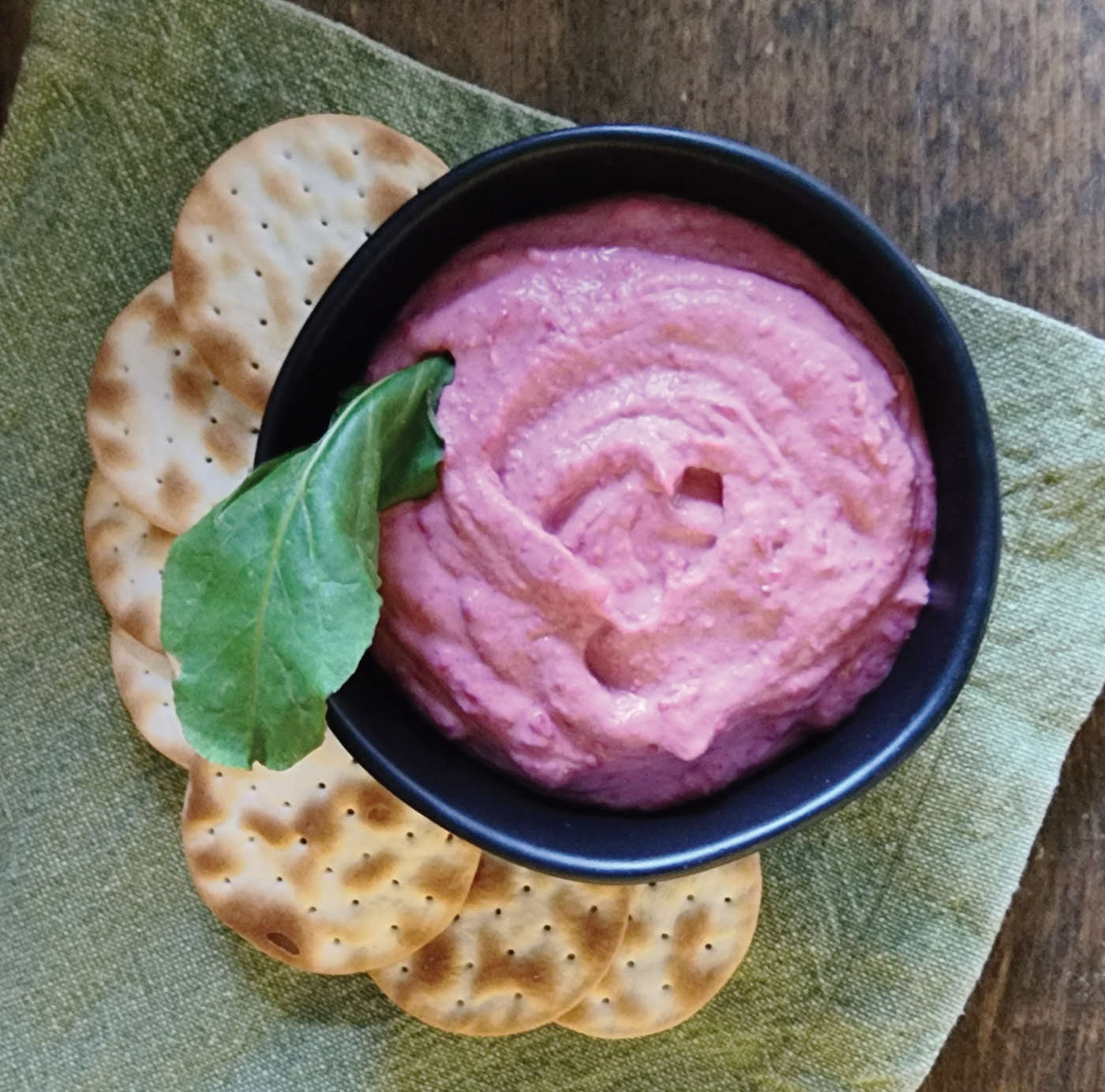
Beet Recipes
Daniel Cunningham, Horticulturist with Texas A&M AgriLife's Water University program. His primary focus is a holistic approach to landscaping and food production systems. Cunningham specializes in Texas native plants and trees, vegetable gardening, edible landscaping, rainwater harvesting and is passionate about utilizing landscapes as habitat for benecial wildlife. For more gardening advice om Daniel, tune in to NBC DFW (Channel 5) on Sunday mornings or ask @TxPlantGuy on Facebook, Twitter or Instagram.
- Daniel Cunninghamhttps://www.edibledfw.com/author/dcunningham/
- Daniel Cunninghamhttps://www.edibledfw.com/author/dcunningham/
- Daniel Cunninghamhttps://www.edibledfw.com/author/dcunningham/
- Daniel Cunninghamhttps://www.edibledfw.com/author/dcunningham/





